- Introduction: Why Online Safety Is Under Fire in 2025
- 1. The Rise of AI Moderation: Promise vs. Reality
- 2. Exposing Big Tech’s Secret Moderation Contracts
- 3. How Content Moderation Silences Minority Voices Online
- 4. Economic Fallout: The Billion-Dollar Cost of Over-Moderation
- 5. Real Stories: Whistleblowers, Leaks, and Employee Backlash
- 6. Regulators Respond: What the U.S. and EU Are Doing About It
- 7. Who Decides What’s Harmful? The Subjectivity of “Safety”
- 8. Content Moderation and Financial Censorship: The Overlap
- 9. Comparing Global Approaches: US vs. Europe vs. Asia
- 10. Solutions That Protect Free Speech Without Compromising Safety
- 11. FAQs & Reader Resources
Introduction: Why Online Safety Is Under Fire in 2025
In an age where almost everything happens online — from activism to advertising — content moderation has become the digital gatekeeper of modern life. Meant to protect users from harmful, violent, or misleading content, these systems were introduced by Big Tech platforms under the banner of online safety. But in 2025, a different story is emerging — one filled with ethical concerns, silenced voices, and growing global backlash.
Exposing Big Tech’s content moderation practices reveals a troubling truth: behind the curtain of “community guidelines” and “trust and safety teams” are flawed algorithms, underpaid human moderators, and opaque policies that decide who gets to speak — and who gets silenced.
From whistleblower leaks to real-life consequences for small creators, journalists, and marginalized voices, this scandal goes far beyond corporate PR. It’s reshaping the future of free speech, financial access, and digital governance — especially in democracies like the U.S., UK, and Australia.
In this deep-dive, we’ll break down:
- The hidden economic and social costs of content moderation
- The global regulatory response now threatening tech giants
- Why the line between safety and censorship has never been blurrier
- And what solutions could restore balance in the age of AI-driven control
1. The Rise of AI Moderation: Promise vs. Reality
When Big Tech introduced AI-powered content moderation, it was marketed as a breakthrough — a faster, smarter, and more scalable way to keep users safe from hate speech, misinformation, and online abuse. The promise was simple: let machines handle the messy parts of the internet so humans wouldn’t have to.
But in practice, the reality has been far more complex — and controversial.
How AI Content Moderation Works (In Theory)
At its core, AI moderation relies on machine learning algorithms trained to:
- Detect harmful keywords, images, and videos
- Flag content that violates platform policies
- Automatically remove or shadow-ban posts deemed unsafe
- Reduce reach of “borderline” or sensitive material
These systems often run 24/7, screening billions of posts across platforms like Facebook, YouTube, TikTok, and Instagram.
But Here’s Where It Fails (In Reality)
Despite years of training and massive investment, AI moderation still struggles with:
- Context: It can’t always tell the difference between hate speech and satire, or misinformation vs. critical reporting
- Language bias: Most models are built in English, failing in multilingual environments
- Cultural nuance: What’s “offensive” in one culture may not be in another — but AI can’t adjust for that
- False positives: Innocent creators are often penalized for using flagged words (e.g., “sex education” or “breast cancer awareness”)
- Algorithmic discrimination: Studies show marginalized communities are disproportionately censored due to biased training data
The Consequences for Creators and Communities
What was meant to keep users safe is now silencing legitimate voices, demonetizing small creators, and even affecting political discourse.
In 2024 alone, YouTube reportedly auto-flagged over 120 million videos — nearly 40% were later overturned on appeal.

2. Exposing Big Tech’s Secret Moderation Contracts
While algorithms handle much of the front-end moderation, the real dirty work often falls on human contractors — many of whom work in poor conditions, behind the scenes, and far from Silicon Valley. In 2025, new leaks and investigative reports have exposed a troubling system: Big Tech companies outsourcing content moderation to low-cost labor markets, with minimal oversight and high human cost.
Where Moderation Really Happens
Most people assume that moderation is done by tech-savvy engineers in the U.S. or Europe. In reality, major platforms outsource this work to third-party companies in countries like:
- The Philippines
- India
- Kenya
- Brazil
- Malaysia
These moderators are tasked with reviewing thousands of violent, graphic, or psychologically disturbing pieces of content daily — often for less than $2–$5 per hour.
The Human Toll: Psychological Trauma and Exploitation
Ex-moderators have reported:
- Unfiltered exposure to abuse, suicides, terrorism, and child exploitation
- No access to proper mental health support or trauma care
- Inadequate training to make complex ethical decisions
- Punishment for missing quotas or letting borderline content slip through
Some contractors have even signed non-disclosure agreements (NDAs) that legally prevent them from speaking out — even about unsafe work conditions.
A former Facebook moderator in Nairobi told reporters: “We were treated as disposable. They care more about user metrics than human lives.”
Why Big Tech Keeps It Quiet
These outsourcing deals:
- Keep costs down while appearing compliant with global safety laws
- Distance companies from accountability when scandals break
- Allow platforms to say moderation is “handled responsibly” without revealing the labor force behind it
3. How Content Moderation Silences Minority Voices Online
While content moderation is supposed to foster safer digital spaces, in practice, it’s often used to suppress marginalized voices. For many communities — especially racial minorities, LGBTQ+ creators, activists, and independent journalists — Big Tech’s moderation systems don’t protect; they punish.
The Algorithmic Bias Behind the Censorship
AI-driven moderation tools are only as good as the data they’re trained on. If that data reflects societal biases (which it often does), the algorithms will too. As a result:
- Posts using Black Vernacular English (AAVE) or indigenous languages are more likely to be flagged
- Trans and queer content creators report disproportionate takedowns of educational or personal content
- Activist videos and protest footage are often labeled as “violent” or “graphic,” despite being newsworthy
A study by UCLA in 2024 found that LGBTQ+ content on Instagram was 2.5x more likely to be shadowbanned compared to similar mainstream content.
Censorship in the Name of ‘Community Guidelines’
Platforms use vague policy terms like “hate speech,” “adult content,” or “incitement” — without publicly defining them clearly. This allows:
- Subjective enforcement of rules depending on who is posting
- Disproportionate takedowns of political dissent from certain regions
- Suppression of culturally specific content misunderstood by Western-trained AI systems
Real-World Impacts Beyond the Screen
When marginalized voices are silenced online:
- Movements lose momentum
- Critical health and safety information is buried
- Communities are stripped of platforms for education, advocacy, or support
- Creators lose income due to demonetization or account suspensions
4. Economic Fallout: The Billion-Dollar Cost of Over-Moderation
Beyond ethics and free speech, there’s a growing financial story in the Big Tech moderation scandal — and it’s hitting creators, small businesses, advertisers, and even the platforms themselves. In 2025, the economic cost of over-moderation is no longer theoretical; it’s measurable, painful, and growing fast.
The Creators Losing Revenue Overnight
Content moderation algorithms frequently:
- Demonetize content due to flagged keywords
- Shadow-ban creators, reducing their organic reach
- Ban accounts without warning, even for non-violations later overturned
For creators who rely on platforms like YouTube, Instagram, TikTok, or Patreon, a single automated takedown can mean:
- Loss of thousands in monthly income
- Cancellation of sponsorship deals
- Permanent audience disruption or loss of trust
According to a 2025 report by Creator Rights Now, over 39% of full-time digital creators experienced income disruption due to AI-driven content flags.
Small Businesses Aren’t Immune Either
E-commerce shops, coaches, freelancers, and service providers often advertise on social media. But when ads or posts are mistakenly flagged as:
- “Spam,”
- “Sensitive,” or
- “Misinformation” —
They face:
- Account suspensions without recourse
- Ad delivery throttling, reducing ROAS (return on ad spend)
- Loss of visibility in search and explore features
The Ripple Effect on Big Tech Itself
Ironically, the very companies enforcing over-moderation are feeling the economic consequences:
- Reduced ad revenue from advertiser distrust
- Higher appeals and legal costs from wrongful bans
- Rising demand for human support teams and content policy reform
- Pushback from shareholders, regulators, and the public
5. Real Stories: Whistleblowers, Leaks, and Employee Backlash
Behind the polished PR campaigns of Big Tech lies a growing rebellion from within. In 2025, a wave of whistleblowers, internal leaks, and employee protests has brought troubling truths about content moderation into the public eye. These aren’t isolated incidents — they represent a broader pattern of ethical concerns and internal conflict.
Whistleblowers Speak Out — And Face Consequences
Former content moderators, engineers, and trust & safety leads have come forward with:
- Leaked internal memos showing deliberate algorithmic bias
- Proof of profit-first decisions overriding ethical concerns
- Evidence of platforms suppressing dissenting political views
- Testimony of being silenced or fired after raising red flags internally
One high-profile case in 2025 involved a former Meta Trust & Safety executive who revealed the company had manually exempted certain political influencers from moderation policies in key election years.
“We weren’t moderating for safety — we were moderating for optics,” the whistleblower said before a U.S. Senate subcommittee.
The Psychological Cost for Content Moderators
Contracted moderators working in offshore facilities report:
- Exposure to daily graphic content with no mental health support
- Extreme performance pressure, reviewed by opaque metrics
- Isolation and depression, with little recourse to speak out
- Retaliation and contract termination for voicing concerns
An internal Slack channel at one outsourcing firm, leaked in March 2025, revealed dozens of complaints from moderators about “inhuman workloads” and “emotional burnout.”
Employee Walkouts and Internal Petitions at Tech Giants
Engineers and product teams have also begun pushing back, demanding:
- Greater transparency in moderation decisions
- Independent oversight committees
- Mental health provisions for moderation teams
- Clearer whistleblower protections
In early 2025, a group of Google employees staged a virtual walkout after the company refused to implement human appeals for auto-banned accounts.
6. Regulators Respond: What the U.S. and EU Are Doing About It
As Big Tech’s content moderation practices spark global outrage in 2025, governments are finally stepping in. From Capitol Hill to Brussels, lawmakers are proposing — and in some cases passing — sweeping reforms aimed at making tech platforms more transparent, more accountable, and less monopolistic in how they moderate content.
In the United States: Section 230 Reform and Digital Rights Bills
For decades, Section 230 of the Communications Decency Act shielded platforms from liability for user content. But in 2025:
- Bipartisan support is growing to amend Section 230 to require greater transparency
- New proposals include mandatory appeals processes, real-time moderation logs, and independent audits of AI systems
- Lawmakers are pushing for a “Digital Due Process” bill, which would give users the right to:
- Know why content was removed
- Challenge takedown decisions
- Be notified before demonetization
Senator Lydia Greene (D-NY) stated: “Big Tech shouldn’t act as judge, jury, and executioner of online speech.”
In the European Union: The Digital Services Act (DSA) Goes Live
The EU’s Digital Services Act, enforced from February 2025, is already impacting global tech policy:
- Platforms must publish moderation transparency reports
- “Very large online platforms” (VLOPs) are required to assess systemic risks to freedom of expression
- Users can appeal decisions through independent mediators
- Fines up to 6% of global annual turnover for non-compliance
The DSA is seen as a model for rights-based content governance — a stark contrast to the U.S.’s more market-driven approach.
Other Global Examples
- Australia’s eSafety Commission has introduced stricter harms-based takedown frameworks but faces criticism over vague definitions
- Canada’s Online Harms Bill includes obligations for platforms to combat hate speech, but civil liberties groups are raising free speech concerns
- Singapore and India are implementing government-controlled moderation panels, drawing concern over censorship
Comparative Insight: Policy by Region
| Region | Key Regulation | User Appeals | Transparency Requirement | Risk of Overreach |
| USA | Section 230 reforms (proposed) | Limited | Voluntary (for now) | Moderate |
| EU | Digital Services Act (DSA) | Strong | Mandatory | Low–Moderate |
| Australia | eSafety Framework | Weak | Partial | High |
| Asia (India/SG) | Govt-led Panels | Low | Discretionary | Very High |
7. Who Decides What’s Harmful? The Subjectivity of “Safety”
In theory, content moderation is about removing harmful content to protect users. But in reality, the term “harm” is highly subjective — shaped by culture, politics, profit motives, and platform priorities. In 2025, this lack of clear definition is fueling confusion, inconsistency, and widespread censorship concerns.
What Counts as Harmful? It Depends Who You Ask
Across platforms, “harmful” may refer to:
- Misinformation or fake news
- Hate speech or violent rhetoric
- Graphic imagery or nudity
- Mental health triggers (e.g. self-harm, suicide)
- Political dissent (in authoritarian regimes)
But who decides where the line is drawn? Often, it’s:
- AI trained on Western norms and corporate priorities
- Moderators with limited cultural understanding
- Executives pressured by advertisers, regulators, or PR optics
The Lack of Standardized Definitions
Unlike journalism or law, content moderation lacks universal definitions for harm. For example:
- A post critical of a government could be labeled “disinformation” in one country, but “free speech” in another.
- A video on LGBTQ+ rights might be flagged as “adult content” by an AI lacking context.
- Graphic images used for war reporting or education are often auto-deleted with no path for appeal.
Platform Policy: Vague by Design?
Many tech companies use broad or undefined terms like:
- “Community Guidelines Violations”
- “Harmful misinformation”
- “Borderline content”
These vague terms offer platforms legal protection, but leave users with no clear understanding of what rules they violated.
Why This Matters More Than Ever
- Creators can’t adjust their content if they don’t understand the rules
- Activists and journalists risk being silenced without recourse
- Users lose trust in platforms they once relied on for open expression
- Without clear definitions, even well-intentioned moderation becomes a tool of invisible censorship
8. Content Moderation and Financial Censorship: The Overlap
In 2025, content moderation isn’t just about what you can say — it’s increasingly about whether you can earn, spend, or fundraise online. A growing number of creators, journalists, and activists are discovering that Big Tech’s moderation tools now extend into their wallets, cutting off revenue streams with little warning or accountability.
How Financial Censorship Works in the Digital Era
Moderation systems are now deeply tied to:
- Payment processors (Stripe, PayPal)
- Advertising networks (Google Ads, Meta Ads)
- Crowdfunding platforms (Patreon, Ko-fi, BuyMeACoffee)
- Monetization tools on YouTube, TikTok, and Instagram
Once content is flagged — even mistakenly — creators can experience:
- Instant demonetization of videos or posts
- Removal from ad networks or affiliate programs
- Frozen donations or payouts
- Blacklisting from payment platforms for “policy violations”
Real-World Examples of Financial Deplatforming
- A U.S.-based political podcast was removed from Patreon after its COVID-19 discussions were deemed “medical misinformation” — despite citing CDC data.
- LGBTQ+ creators have reported lower CPMs and frequent demonetization due to content flagged as “sensitive.”
- Journalists covering war zones have had their crowdfunding campaigns suspended for allegedly violating “graphic content” rules.
When Payment Policies Mirror Content Policies
Tech companies often use the same vague terms for both:
- “Violating community guidelines”
- “Promoting harmful or misleading information”
- “Risk of reputational harm to the platform”
The result? A closed-loop system where content you post determines if you get paid — even if that content isn’t illegal or harmful by public standards.
The Chilling Effect on Creators and Free Speech
- Creators self-censor to avoid losing income
- Small businesses lose advertising access on unclear grounds
- NGOs and journalists face platform bans that cripple funding
And unlike traditional censorship, financial censorship is:
- Harder to detect
- Nearly impossible to challenge
- Often automated and global in impact

9. Comparing Global Approaches: US vs. Europe vs. Asia
As content moderation becomes a global concern, countries are responding in vastly different ways. In 2025, the “how” and “why” behind moderation policies depend heavily on local laws, political climate, and societal values. Understanding these differences is crucial — especially for creators, businesses, and users who operate across borders.
United States: Market-Driven and Politically Polarized
- Section 230 still shields platforms from most legal responsibility
- Moderation practices are shaped by corporate policy and advertiser pressure, not federal regulation
- Regulatory proposals (like the “Digital Bill of Rights”) remain stalled due to partisan gridlock
- Strong free speech protections, but inconsistent enforcement
Moderation in the U.S. is often viewed through the lens of politics — with critics on both left and right accusing Big Tech of bias.
European Union: Rights-Based and Strictly Regulated
- The Digital Services Act (DSA) is now live and enforceable
- Platforms must provide moderation transparency, user appeals, and risk assessments
- Fines can reach up to 6% of global turnover for non-compliance
- Strong focus on human rights, data privacy, and democratic accountability
Asia: Government-Led and Often Opaque
- India, Singapore, and Indonesia have introduced state-controlled moderation mandates
- Platforms must comply with government takedown orders — sometimes within hours
- Little to no transparency, and limited appeals for users
- Risk of state censorship under the guise of “online safety”
In India, over 120 social media accounts were removed in early 2025 under a new law criminalizing “anti-national” content — often vaguely defined.
Quick Comparison Table
| Region | Regulation Approach | Transparency | Appeals Process | Risk of Government Overreach |
| United States | Corporate Self-Governance | Low | Weak | Moderate |
| European Union | Rights-Based Regulation | High | Strong | Low |
| Asia (e.g., India, SG) | State-Controlled | Low | Minimal | High |
What This Means for Users
If you’re:
- A creator, your content may be monetized in one country but banned in another
- A business, your ads may be rejected based on local guidelines you weren’t aware of
- A user, your freedom of speech depends on where you post — and where the platform operates
10. Solutions That Protect Free Speech Without Compromising Safety
The challenges of content moderation in 2025 are clear — but so are the opportunities for reform. Around the world, experts, platforms, civil society groups, and regulators are exploring new moderation models that aim to balance safety with freedom, automation with human oversight, and business interests with public trust.
1. Human-AI Hybrid Moderation Models
Rather than replacing human judgment, AI tools should support it. Some platforms are now:
- Using AI to flag content for human review, not automatic removal
- Implementing tiered escalation systems for complex content
- Combining cultural context with real-time risk evaluation
Studies show that human-AI hybrids reduce false positives by up to 38% compared to AI-only systems.
2. Localized and Community-Led Moderation
One-size-fits-all rules don’t work in a global internet. Emerging models include:
- Decentralized moderation panels chosen from user communities
- Country-specific standards based on local norms and language
- Transparent appeals processes that reflect the lived experience of users
3. Transparent Algorithms and Open Policy Frameworks
Transparency is a cornerstone of trust. Reform proposals advocate for:
- Publicly available moderation policies
- Algorithmic transparency dashboards showing why content was flagged
- Third-party audits of moderation outcomes and AI training data
4. Independent Oversight Boards
Platforms like Meta have tested the concept of a “Supreme Court” for content decisions — but independent models go further:
- Multi-stakeholder boards (academics, journalists, ethicists, legal experts)
- Legally binding rulings on takedown disputes
- Oversight of platform policy changes and transparency reports
5. Financial Rights for Creators
To fight financial censorship, some experts recommend:
- A “Creator Bill of Rights” including due process before demonetization
- Alternative monetization channels like Web3 micropayments or NFTs
- Decentralized funding tools not controlled by a single platform
11. FAQs & Reader Resources
To wrap up this deep dive into Big Tech’s content moderation scandal, here are some frequently asked questions, helpful resources, and internal links to further explore the real-world impact of algorithmic control, digital speech, and online financial access.
Frequently Asked Questions (FAQs)
Q1. Can I appeal if my content is removed or demonetized?
Yes, most platforms offer an appeals process — but it’s often slow, opaque, and rarely favors the user. The success rate varies by platform and content type.
Q2. Is content moderation the same across all countries?
Not at all. Each country has its own regulations, which significantly impact how platforms enforce rules. See Section 9.
Q3. Are AI moderation tools getting better?
While AI has improved in filtering spam and explicit content, it still struggles with nuance, context, and bias, especially in sensitive or political content.
Q4. Can I be financially deplatformed without violating any laws?
Unfortunately, yes. Platforms can cut off monetization or payment access for violating internal policies — which aren’t always aligned with public laws or fair practice.
Q5. What’s being done to protect users and creators?
Regulations like the Digital Services Act (EU) and proposed Digital Rights Bills (US) aim to improve transparency, appeals, and platform accountability.
Related Internal Resources (from fintalkinsights.com)
External Tools & Reports for Deeper Insight
- Digital Services Act Summary – EU Commission
- 🔗 https://eur-lex.europa.eu/summary/UK/4625430
- Electronic Frontier Foundation (EFF) – Free Speech Online
- 🔗 https://www.eff.org/issues/free-speech
- Ranking Digital Rights – Platform Accountability Index
- 🔗 https://rankingdigitalrights.org/index/
Final Thought: Moderation isn’t going away — but neither is public scrutiny. The more you understand how platforms work, the better you can protect your voice, your rights, and your livelihood in the digital age.



